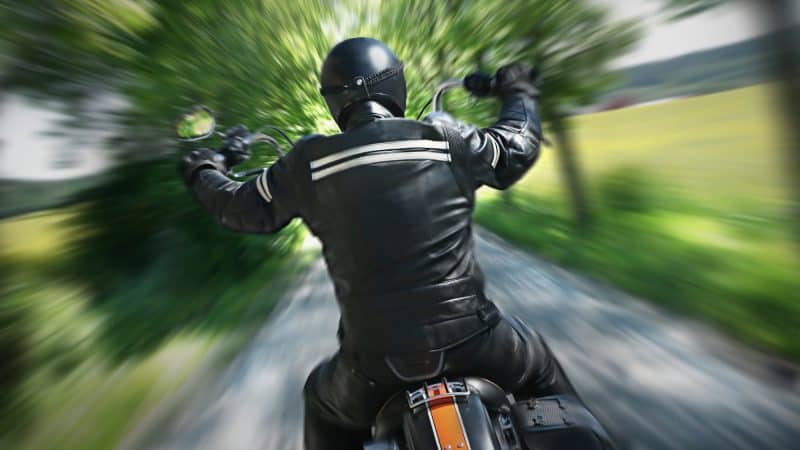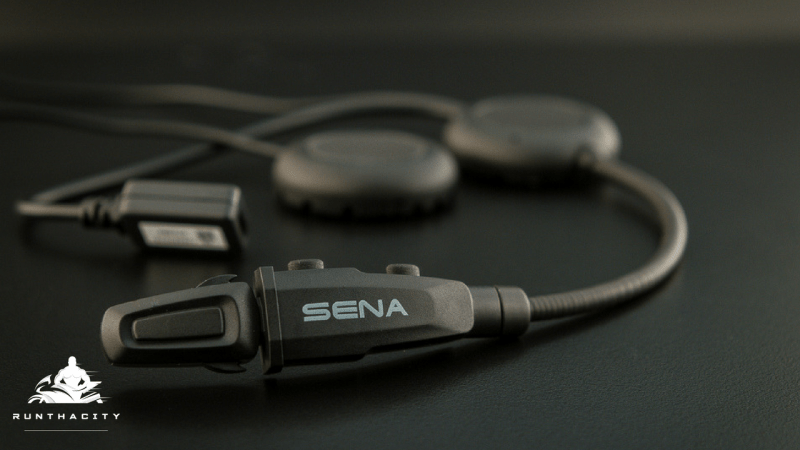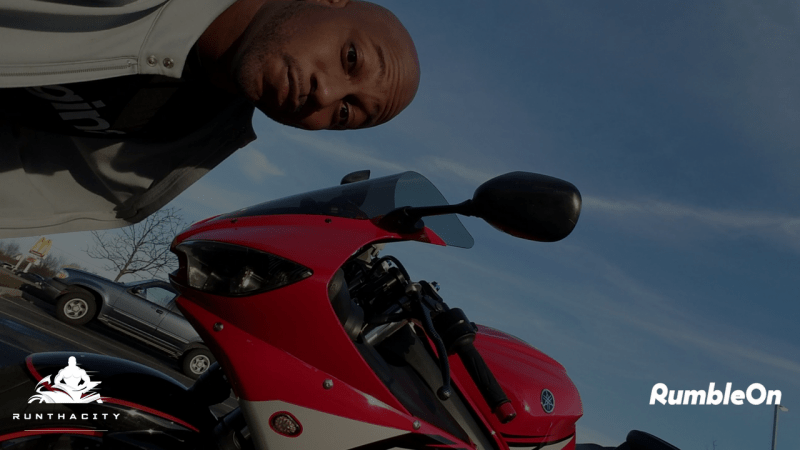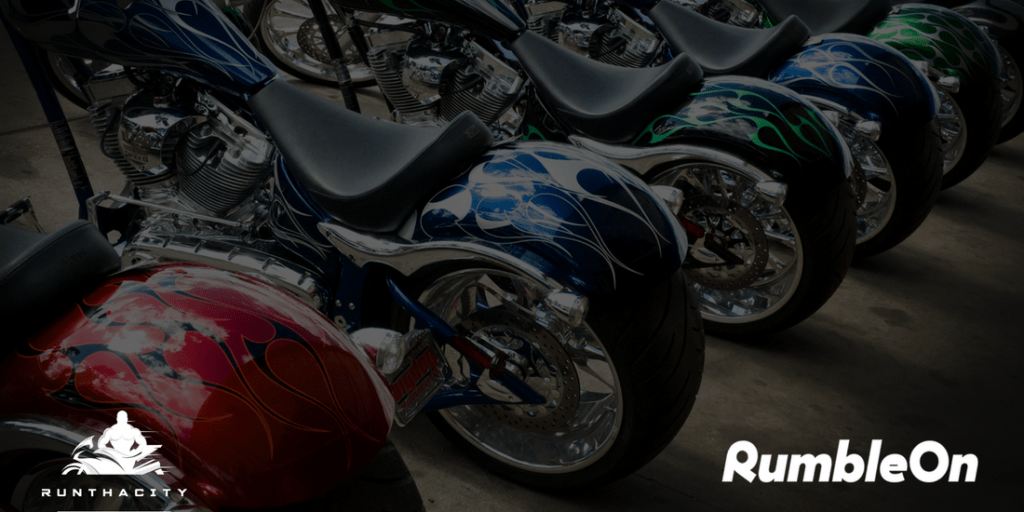Motorcycles are fun, and have become a bit of an American icon representing free spirits, independence and a fun personality. Who hasn’t, at one time, wanted one, or at least to try riding one?
Well, like with any vehicle, you’re going to have to be trained to ride it, and you’re going to need insurance, as with anything on the road. Insurance is a pain, of course. It’s one of those things you shell out hundreds of dollars a year for, and hope to powers above that you never wind up needing once you have it.
It’s necessary. When you’re on the road traveling at speeds of over sixty miles per hour, accidents can and will eventually happen. Humans make mistakes, and some are, to put it frankly, idiots who just drive or ride carelessly. Insurance protects you from said idiots.
Insurance is a necessary evil, so it’s not free. Before investing in your motorcycle, you should do your due diligence regarding what upkeep of your bike is going to cost you. This includes maintenance, plates, tags, your license and, most importantly of all, said insurance.
So, how expensive is motorcycle insurance? There’s no clear-cut answer to that, because different companies will vary, and more importantly, factors about yourself will directly, linearly impact price in every situation.
Let’s take some time to talk about these. If you see yourself described in any of these with prices you find painful, it may not be time for a motorcycle yet, or some other luxury may have to be given up.
What’s the Difference?
You’re thinking, you have a car, you know what car insurance rates are like, is there honestly a difference between cars and bikes in this regard? And if so, why?
To answer your first question, yes, there’s a significant difference in all regards between cars and bikes, from obtaining the license, to maintaining it, all the way up to insurance. It’s a horse of a very different color.
As for why? Well, all vehicles are inherently, mostly equally dangerous. How they’re dangerous is a big one. Vehicles can be dangerous to their passengers, of course, and often are. Their bigger danger is inflicting that damage on another unsuspecting driver, pedestrian, or other thing they may collide with.
A motorcycle is more dangerous to its rider(s). Hitting anything stationary like walls, polls, buildings or trees in a car is something you stand a decent chance of surviving, as the giant metal box around you absorbs the shock. Doing so on a motorcycle isn’t so pretty.
You could also fall off one of them doing 60, or be hit by one of the idiots we mentioned earlier whom drive negligently. When a four wheel vehicle hits a motorcycle, it usually does damage the car, though often fairly superficially. The motorcycle and its rider(s) enjoy no such luck. Riding a motorcycle requires far more vigilant operation due to this risk, the dangers of larger vehicles, and a plague of drivers who don’t check for motorcycles.
Check for motorcycles, America.
Insurance Pricing
Like we said, due to a lot of variables, there’s no way to predict with one hundred percent certainty what your price would be, even with a lot of criteria, as these prices tend to be calculated at the time by an agent, due to the impact of variables changing from time to time.
Thus, the pricing below is an average, or generality. They’re good enough to ballpark whether or not you have the budget to ride a motorcycle legally.
Cruiser or Touring Motorcycle
- 25-60 yo, Good Driving Record, Liability Only – This going to be the least expensive scenario, as liability is the minimal legal coverage possible, just as with home or car insurance. It’s not hard to qualify for this insurance if you have a clean or at least good driving record. It may be possible to get it cheaper through your car insurance provider, if you’re in good standing with them as a customer. Est. Price: $100-$500/year
- 25-60 yo, Good Driving Record, Full Coverage – Chances are, you’ll want to protect what you love, and that means additional coverage for repairs, replacements, theft and other such concerns, not just covering you legally in an accident. This makes the price go up a good bit, but for this particular customer bracket, less than you might expect. This too may be cheaper through your existing auto insurance provider. You may also cheapen it further via installing approved anti-theft devices, purchasing approved safety gear, and so on. Est. Price: $400-$800/year
- 25-60 yo, Bad Driving Record, Full Coverage – A bad record can really haunt you with insurance. Not only can it be hard to get liability (due to having a record of being one), but the price of the full coverage will be considerably higher. We can’t really even give you a reliable estimate here, because it all depends on which provider you approach, what kind of bad driving record it is that you have, and what kind of mood the agent is in when they quote the price. Suffice it to say, it will be very expensive, possibly unmanageably so, and there aren’t really any lifehacks to make it cheaper. Et. Price: Impossible to guess, but tremendously high!
Crotch Rocket Sports Motorcycle
- 16-24 yo, Good Driving Record, Full Coverage – A 16-year-old probably shouldn’t be on a motorcycle, especially not a crotch rocket of all things. At that age, if motorcycles are something they want to pursue as a hobby or way of life, they should be learning fundamentals on dirt bikes. However, in some states, it is legal under guardianship, and at 18, anyone can legally drive anything if they earn the license to do so. Inexperience (which for motorcycles often takes liability only off the table) raises prices quite a bit, and full coverage is itself quite expensive. Parents might be able to get prices lower if policies give them some of the responsibility, thus lowering the premiums a little, but really, this is just going to be expensive, no matter how you slice it. Est. Price: $900-$1200/year
Are you a long-time rider just seeing if you can find a better price for your motorcycle insurance? Are you someone who’s planning to get into biking? Did these prices make you rethink how interested you were? I’m curious to know, so subscribe to me on YouTube, and let me know somewhere in the comments if these prices are obscene, about what you expected, or quite a bit lower than you feared. Then stick around, if you still want to ride, I’ve got some great content to get you started with one of America’s great hobbies!
You Might also like
-
What Every Rider Should Know About Road Rash
Road rash isn’t a punchline to a joke about bad motorcycle handling or old video game. Road rash, also called “friction burn,” is a serious injury. The severity of the wound is measured by degrees, the same as you would a chemical or fire burn. Since the skin is the largest organ of our bodies, getting road rash opens you up to other vulnerabilities, such as infection. But there is more to understand about road rash than these points.
Let’s look at this serious injury that can happen to anyone and learn how to classify and treat various types of road rash.
The Different Types of Road Rash
Not every bout of road rash is created equal. There are three main types of road rash:
- Avulsion – the skin is scraped away. Sometimes fat, muscle, and even bone will be exposed.
- Compression – where the body is caught between two objects, such as the motorcycle and the road. This results in bruising, broken bones, and damaged muscle.
- Open wound – usually require stitches. Open wound road rash might even require skin grafting.
Aside from the 3 different types, there are 3 degrees of damage:
- First degree – the first layer of the skin is red. Does not require medical treatment and will heal well enough on its own.
- Second degree – the first layer of skin, known as the epidermis, is broken. There can be bleeding and debris stuck in the wound. Usually requires little medical treatment and can heal with no scarring or lasting damage.
- Third degree – skin has been peeled away, leaving tissue, fat and sometimes bone exposed. Victims often need skin grafting.
The degrees of the crash depends on factors such as the force of the impact with the ground, the type of surface where the crash takes place, and whether safety gear was equipped.
Road rash will often occur in places that come in contact with the abrasive surface, either when attempting to catch oneself or when rolling or getting dragged. The outside of the legs, knees, palms, thighs, shoulders, and face are usually where road rash occurs.
Complications of Road Rash
Seek medical treatment immediately if you experience any of the following with road rash:
- Severe pain
- Inability to move affected region
- Cuts on the face that are larger than a ¼ inch
- Cuts on the body that are larger than a ½ inch
- Bleeding doesn’t stop
- Gaping wound remains opened with you relax the body
- Fat is visible in the exposed tissues
- Road rash is paired with other injuries, including possible concussion or broken bones.
Any open wound should be treated with antibiotics within six hours. Otherwise, you are at risk of infection.
Treatment and Recovery From Road Rash
Depending on the severity of the road rash, you can oftentimes treat it yourself. In that event, do the following:
- Stop any bleeding.
- Wash your hands with soap and water.
- Rinse the wound thoroughly.
- Wash the wound with soap, water, and then use some witch hazel.
- Apply a topical antibiotic.
- Bandage the wound.
- Change the dressing.
Note: During the recovery, the skin will undergo healing from the deepest layers to the top. It might get scabs. Do not pick the scabs. Instead, continue changing the bandages and applying topical antibiotics. Once the oozing stops, you can use petroleum jelly to keep the skin supple and lessen the scarring.
If you end up going to the doctor because of a deep wound, the medical professional might recommend using ibuprofen, a non-steroidal anti-inflammatory drug (NSAID), acetaminophen, or naproxen to deal with the pain.
Remember that because the skin has been opened by abrasion, you could be at risk for infection. Consider getting a tetanus shot. Tetanus boosters last 10 years, so if you had an injury where the epidermis or dermis of the skin has been injured, tetanus bacteria can enter the wound. At any time symptoms of infection begin, such as redness, swelling, warm or hot skin around the injury, tenderness, pain, or bloody ooze or yellowish pus, you could have an infection. Make sure to get to a doctor immediately.
Hopefully, you should now have an understanding of road rash and how serious it can be. Don’t ignore severe injuries after a fall. Drive safe and stay safe, so you can keep riding!
-
Sena 3s Bluetooth Headset: Quick Review | SMH3
The Sena 3S Bluetooth Headset can best be described as simple but good, a tiny, light headset that weighs about the same as a few coins. Not only is it light, but it is also very easy to use with just two buttons used to control the headset. The headset is available in two versions – the 3S-B with a boom mic or the 3S-W with a Lilliputian mic.
The Sena 3S Motorcycle Bluetooth Headset
The Sena 3S Bluetooth Headset is the next generation of the Nexx SXCOM, the first self-contained motorcycle system which was a joint venture of Sena and Nexx. The headset was introduced at the 2014 AIMExpo Show in Orlando, Florida. The 3S is smaller and lighter than the SX-COM, containing a pair of speakers and a microphone. It is self-contained and uses a Bluetooth stereo headset and intercom. For a cheap motorcycle Bluetooth headset, the 3S has everything you need and nothing you don’t.
Using the Sena 3S
Early motorcycle headsets were extremely difficult to use. Some were so complicated, you needed to tape instructions to the gas tank to remember what sequence of buttons to press. They had very limited range and it was sometimes impossible to talk to passengers through the headsets. Included with the headset is a four-page “Quick Start” booklet or you can download a .pdf form of the leaflet from Sena here. The headset powers up using a quick press of the + and – buttons. Even better, these two buttons control the entire system, whether you want to change the volume, use your phone or pair a GPS or MP3.
SMH3 Sound Quality
The speakers on the Sena 3S are a little bulky, but not any worse than other types of motorcycle headsets. The sound is good and can be heard easily over the sound of the bike. The microphones are sensitive so the mouthpiece does not need to be pressed to your mouth like other systems. In fact, if the mic is too close and the volume to high, the speakers are overwhelmed. Music quality is good as well and you can distinguish bass sounds easily. For a cheap motorcycle Bluetooth headset, the sound is outstanding, however.
Should I Choose the Boom or Wired Version?
Whether to choose the boom or wired version of the 3S depends on several factors. The boom version is designed for open-face helmets due to the location of the operating buttons. The + and – buttons are located along the top end of the microphone and, although you can reach under the face shield to press them, this can be difficult. If you are also wearing thick gloves or have a large face shield, accessing the buttons on the boom mic is not easy. However, the wired version doesn’t work as well in full-face helmets, especially if there is a large chin vent. In those cases, wind noise can affect microphone performance.
Sena 3S Features
- Two-buttons on the control pad on the mic or the external mount control all features.
- Bluetooth intercom up to 200 meters (220 yards) in open terrain.
- Bluetooth pairing for mobile phones (can connect dual mobile phones).
- Voice prompts.
- Bluetooth stereo headset with A2DP.
- Bluetooth music playback control by AVRCP: play, pause, track forward and track back.
- Integrated audio booster.
- Up to 8 hours talk time, 7 days stand-by time.
- Individual volume control for each audio source.
- Firmware upgradeable.
Two-year warranty.
In the Box
- Bluetooth Built-in Speaker-microphone Unit
- USB Power & Data Cable (Micro USB Type)
- Microphone Sponges
- Male Velcro Pads for Speakers
- Female Velcro Pads for Speakers
Sena 3S Specifications
- Talk time: 8 hours.
- Stand-by time: 7 days.
- Working distance (intercom): up to 200 meters (220 yards) in open terrain.
- Operating temperature: -10˚C ~ 55˚C (14°F ~ 131°F).
- Dimensions:
- Speaker: 39.9 mm x 39.9 mm x 11.3 mm ( 1.6 in x 1.6 in x 0.4 in )
- Boom microphone length: 180.0 mm ( 7.1 in )
- Weight:
Headset: 59 g ( 2.08 oz. )
Bluetooth:- Profile: Headset Profile, Hands-Free Profile (HFP), Advanced Audio Distribution Profile (A2DP), Audio Video. Remote Control Profile (AVRCP).
- Bluetooth 3.0
- Audio:
- Built-in SBC Codec
- Noise cancellation
- Wind noise reduction
- Wide volume control
- Sample rate: 48kHz (DAC)
- Battery:
- Charging time: 2.5 hours
- Type: Lithium polymer battery
Sena Downloads
As a cheap motorcycle Bluetooth headset, the Sena 3S appeals to several types of riders. It is perfect for those who want to try a Bluetooth intercom set or those who need an easy-to-use system that isn’t expensive. To learn more about the Sena 3S Motorcycle Bluetooth headset and other accessories for your bike, visit check out my YouTube channel.
-
21 Summer Motorcycle Rallies for Summer 2018
What’s better than the open road and a summer breeze on your face? At RumbleOn, we believe that it can only be beat by joining thousands of others who live and breathe for the same experience. This summer, don’t miss your chance to join a community of riders from across the nation by checking out this list of 25 events in 2018. Make lifelong connections, show off your ride, or even buy or sell a bike of your own!
Looking for more ways to adventure? We’ve also compiled the Best Biker Bars and Food Spots, Best Sights to See, and Best Roads to Ride for you.
July Events
Monday, July 9, 2018 – Thursday, July 12, 2018
Bowling Green, KY
32nd Annual Women on Wheels International Ride-In™
Tuesday, July 10, 2018 – Thursday, July 12, 2018
Johnson City, TN
Hell’s Canyon Motorcycle Rally
Thursday, July 12, 2018 – Monday, July 16, 2018
Baker City, OR
Monday, July 16, 2018 – Friday, July 20, 2018
Provo, UT
2018 Cascade Country Rendezvous and GS Rally by BestRest
Thursday, July 19, 2018 – Sunday, July 22, 2018
Republic, WA
ABATE of Indiana’s 38th Annual Boogie 2018
Thursday, July 19, 2018 – Sunday, July 22, 2018
Springville, IN
Thursday, July 19, 2018 – Sunday, July 22, 2018
Muskegon, MI
North Dakota Ladies Run – 31st Annual
Friday, July 20, 2018 – Sunday, July 22, 2018
Dickinson, ND
South East Raider Rally – 10th Annual
Sunday, July 22, 2018 – Sunday, July 29, 2018
Maggie Valley, NC
CMA Florida Summer Springs Fling
Friday, July 27, 2018 – Sunday, July 29, 2018
Ft. McCoy, FL
GWRRA Montana District Convention 2018
Thursday, July 26, 2018 – Saturday, July 28, 2018
Missoula, MT
Friday, July 27, 2018 – Sunday, July 29, 2018
Las Vegas, NM
August Events
Thursday, August 2, 2018 – Sunday, August 5, 2018
Black River Falls, WI
Friday, August 3, 2018 – Sunday, August 12, 2018
Sturgis, SD
Apple’s 15th Annual East Coast Motorcycle Rally
Wednesday, August 8, 2018 – Sunday, August 12, 2018
Little Orleans, MD
GWRRA Kentucky Blast District Convention 2018
Thursday, August 16, 2018 – Saturday, August 18, 2018
Cave City, KY
12th Annual Surfside Beach Bash
Friday, August 17, 2018 – Sunday, August 19, 2018
Oyster Creek, TX
Winding Road Ranch Biker Party 2018
Friday, August 24, 2018 – Sunday, August 26, 2018
Rush Springs, OK
Pennsylvania Rally on the River – Summer
Thursday, August 23, 2018 – Sunday, August 26, 2018
Northumberland, PA
September Events
Thunder in the Rockies Motorcycle Rally 2018
Friday, August 31, 2018 – Monday, September 3, 2018
Loveland, CO
Friday, August 31, 2018 – Monday, September 3, 2018
Pioneer, OH


















2 comments on What Is the Average Cost of Motorcycle Insurance?